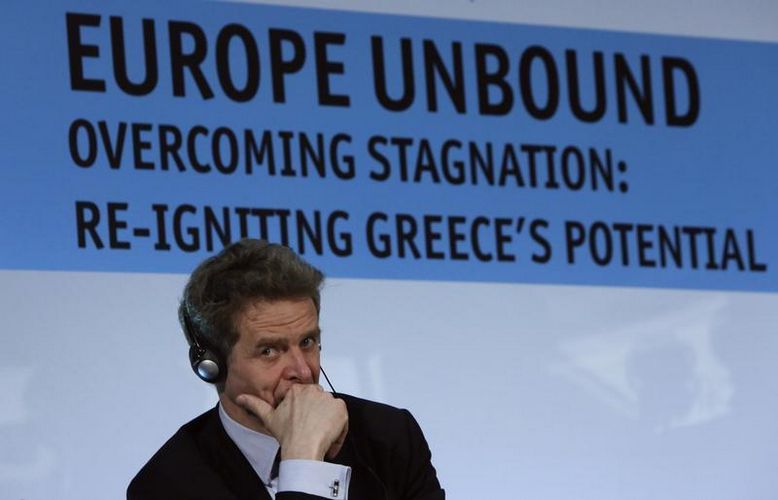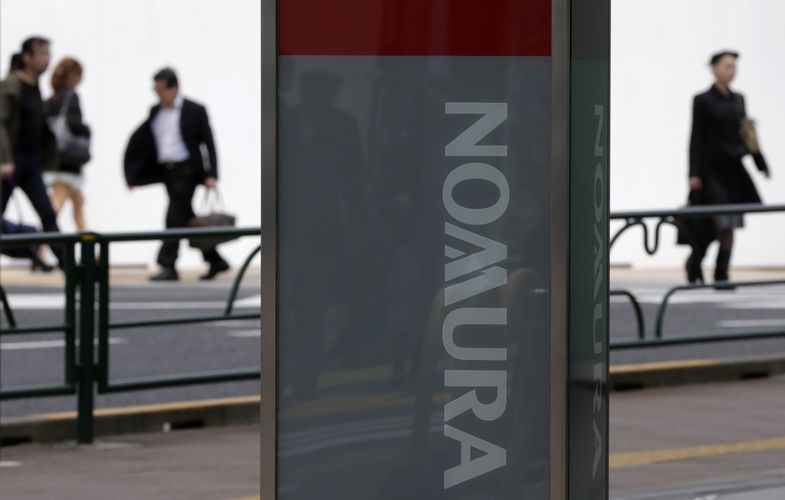Paul Johnson: We are already seeing that in the former local currency funds, particularly in Asia, particularly in Japan, where a lot of the economies that are too small to support ongoing stable markets are being diversified into local currency funds which give investors exactly that, diversification and a little piece of something small. If you look at places like Africa, it is very difficult to find the next South Africa: it is a long way off unfortunately.
Holger Kron: And probably one key thing will be Plan B. When you enter something, you want to have a Plan B: how to get out of it. If I look at Nigerian naira, I find it difficult. When things get rocky, how are you going to pull out? Look at ISK, which has developed in size and momentum quite a lot, but if you have people wishing to get out, they face severe problems if they are engaged in bigger amounts.
Probably, going forward, we will have this sentiment: “we need the Plan B”. So, the investor goes in with a Plan A and with an exit strategy, and here you need efficient swap markets and counterparties in the swap markets domestically so you can really fulfill Plan B. In the end, this will be essential for those markets to develop.
Isabelle Laurent: The point about the market infrastructure is absolutely key. I think what we have seen is many governments saying “we want to ensure that we can develop a domestic capital market”, but actually what they have focused more or less exclusively on is a primary market for government bonds. That then requires different infrastructure than actually creating a secondary market and liquidity and tradeability and the various things that pertain to other people going into those markets. There is a fairly captive audience for primary issuance by governments. Quite often, they have their state pension funds that are required to buy the bonds, they have reserve requirements for banks that are then offset by owning government bonds. Therefore, these things do not really move, they do not really trade. They may be repo-able, but it makes it very, very difficult for somebody else to access that market and to get in and out.
The infrastructure has not yet been created in many of the jurisdictions that we are talking about as being potentially interesting. It is not just settlement, it is rules about the pricing of secondary trading, it is about how long a deal has to be blocked before you can actually get your money back on coupon dates. There are so many different factors that need to be considered as to whether or not a market actually is one which you can go in and out of, as well as swaps.
Paul Johnson: Because of the environment, people are doing a lot more due diligence as well. Eighteen months ago, there was a time when it was potentially very easy to access a country like Nigeria in terms of regulatory sign-off, limit sign-off, and that environment is definitely changing.
But to look at these things now is much tougher. I agree with the point that due diligence is just going up and up and that infrastructure, swap markets and stable local banks are absolutely vital for sustainable markets.
Holger Kron: And things can change fast. Given people’s recent experiences, going forward they will be much more sensitive than before.
Paul Johnson: I think that is right. A country like South Africa is a good example: there has been an offshore market since ‘93, ‘94 and the market has been through panic, it has been through throes, it has been through the Argentina crisis, where government bonds yields doubled in a day. It was a pretty nasty market, but it recovered because of the underlying infrastructure. It is very difficult to pick the next South Africa market, particularly if you are constrained to Africa.
Isabelle Laurent: One thing we have not focused on is convertible versus non-convertible currencies, particularly given the growth of retail investors in exotic currency markets. I think that is another aspect that is quite key: whether or not the currency is convertible, and how easy it is then to access pricing. The likelihood of a moratorium in a convertible currency is somewhat less than it happening in some of the non-convertible markets, which may make it very difficult to actually pay back according to bond terms.
Moti Jungreis: I am not speaking as a retail investor or an institutional investor, but if I was a buyer, I would probably prefer to buy the NDF deals rather than the fully convertible deals. First of all, you always know you are getting dollars back, you don’t have to cross spreads getting in and getting out on the FX market, because, generally speaking, particularly if you hold to maturity, you are getting your coupons and they are all set according to two pages. So, personally, I like the NDF markets. I know that most people prefer to see a convertible market as it shows that a market is developed, but, as we have seen in Brazil, it does not really matter. The demand is there, even if it is an NDF market.
Isabelle Laurent: But that works until it does not work. If you have a moratorium, you cannot always see what the FX rate is. Much of the NDF market then breaks down, as we saw in Russia during the 1998 crisis.
We had personal experience of having put out synthetic bonds, and the EBRD is obviously in a privileged position with preferred creditor status in Russia that was recognised during the Russian crisis. But, actually, it does not necessarily extend to paying agents and trustees and various other things, and it is not automatic that you can find an FX rate at which you can pay people back. So it is not an easy situation. It depends on exactly what the legal situation is at the time.
Holger Kron: What I would add is that, due to the structure, you are bound to the structuring house. So, as an investor, you have a direct exposure to the lead manager, as you do to the credit, which is something about which you might not be aware. So, you are actually adding more credit exposure to the bond that you do not necessarily see as an investor. For example, you think you are exposed to the EIB, but in the end, in the background, you have exposure to the arranger regarding payment.
In the Russia crisis we had people suing or going to court to get back into the money flow, and they had to wait five or six years until they could get to their money. They were frozen in Russia in S accounts, and you had to go to court to get your money back. It became a really complicated matter to exit, to execute Plan B, and it did not happen until long after the maturity of the bonds.
Isabelle Laurent: It also depends where the NDF behind it is being played out. If it is just international players playing with each other, then that works: but if one of them is playing in the domestic market where NDFs are deemed gambling contracts, the whole pack of cards falls down, which again was another thing that happened during the Russia crisis. So, many of these contracts were not recognised, and so many people thought that they had a hedge which they no longer had. There are many permutations, and in many markets synthetic looks easier, because you are accessing it from outside and you can do it through Euroclear/Clearstream and you are not dealing with the domestic infrastructure, but in a moratorium, you quite often find that the risks you thought you were buying actually have a whole host of other things attached to them.
Alexander Liebethal, KfW: When it comes to illiquidity, is there a difference in the current environment?
Holger Kron: It is really depends on the instrument of choice. But the question really arises if markets turn sour: let’s be honest, if Turkey turned sour, you’d have a problem with your Turkish lira-denominated deal. So, this is an extra risk you buy. Does it really make a big difference once the country runs into a problem? I do not know. In the end, both sorts of exposure are the same: you are pretty much on the wrong side in both cases.
The truth probably lies somewhere in between. You are probably worse off with the structured bond because you have added another risk, but in the effective flow of money afterwards, you are fully exposed to the currency devaluation, and you have to wait to get your money out, like in the case of Russia, which does not necessarily have to happen, but did happen on those rouble-linked bonds.
Sjaak-Jan Baars: We have decided to avoid issuing NDF to retail clients because of this reason, because we want to protect them from not understanding the credit issues that are involved. We are also a bit afraid that they don’t always understand where the actual capital guarantee is in these kinds of products. For that reason, we have not so far issued NDF into retail.
But institutional clients, of course, should have the capability to understand where the risks are and what the possibilities are with this product. In that way, it is a great product to actually sell exposure on a specific currency to institutional clients.
IFR: They should understand the risks, but is that actually case? Or does it come as a nasty surprise when you point out to them that they effectively have another layer of credit in there?
Sjaak-Jan Baars: Well, I was aware of the point Holger made, so hopefully the institutional clients are as well. It is part of their job, I have to say.
IFR: I guess we have to rely on responsible investment bankers.
Isabelle Laurent: A lot of it also lies with the lawyers and whether they do the correct due diligence at the time of putting out prospectuses, because many of the investment bankers rely on the lawyers to look into it.
What we found with our synthetic rouble bonds that were issued in 1997 was that, even though one of the top houses’ lawyers was working on it, they did not actually consult their domestic entity, and what they prescribed as a structure actually would not have worked in a market disruption. Their domestic entity knew very well that it would not have worked, but they had not consulted them: they were thinking about it purely in terms of the generalised market structure.
So, we are now much more cautious and we have quite a lengthy market disruption clause in all of our exotic currency bonds, because we have learned from experience that many of the things that we thought would work, even things like alerting investors during a crisis to trying to get them to make choices, are very difficult to do through Euroclear and Clearstream. Yes, you can put out notices, but it is not often to the end account. And because of secrecy in banking, it makes it very difficult for them to know exactly who the end investors are. So, we spent about two months trying to locate all the investors to try to help them get money back on terms that would have actually been preferable to the terms that were originally described in the bond.
IFR: And did you succeed?
Isabelle Laurent: Yes, we did. There was still a significant currency devaluation and you could not walk past that, but at least they did not have money trapped in Russia in S accounts that they could not get out. So yes, we were successful, but it also relied on the fact that EBRD was an issuer with preferred creditor status in that country and that that preferred creditor status was recognised at the time of the moratorium. I think it would have been much harder otherwise.
IFR: Are these points that you can really only learn from experience? Do you go in with what you think is a watertight structure, and then suddenly something does not work, so you tinker with it so it does next time; is that the way it works?
Isabelle Laurent: Probably, although one would hope that when you are employing a very large legal firm — and the investment bank would obviously be doing that for the drafting of the prospectus — they would, in fact, consult their local office to check rules and regulations regarding any payments onshore and how it might operate. But now we know that we need to verify these things. It is difficult: I do not know what else we do not know that may not work, but we have taken advantage of the things that we have already discovered do not work.
IFR: Is it a case of shoot and hope: is there really not a lot of conviction? Are you sometimes surprised that more care is not taken?
Isabelle Laurent: No, I think it is very difficult, because one thing to say about exotic markets is that they are changing their regulations all the time. So, in the past, we spent three or four years working with governments to change regulations in one particular way and then they get changed back, actually, not deliberately, but quite often because they are changing them to address some other issue and they get reversed. One should not be too surprised that it is very difficult in those kinds of markets to understand what all the implications are. But we work very hard on domestic developments, looking at market infrastructure and things that are problematic to investors, and I know that KfW and other big issuers in the markets do as well.
Because [investors] buy a Triple A bond on the basis that they want to be able to get their money back, and if it is blocked for a certain number of days, or there is no secondary market, or the payments system fails, or the legislative environment has changed, it makes it very difficult. So, those are things that we are working on, but you cannot do it in all markets, particularly if you are issuing in a wide range of markets. You have to be aware that [jurisdictions] are changing their own regulations all the time for things that do not relate to international capital market issuers at all.
Horst Seissinger: That is definitely true, and as issuers we do wear two hats. One is when we try to develop capital markets, which is normally the role of institutions like EBRD and the World Bank, and the other is when we want to do funding, which is normally the role of a Rabobank or KfW, where we do have a special focus. From time to time it is mixed.
If we look back one or two years, one major focus was to help to develop capital markets, but if we look back at what has happened last year and this year, we are clearly more focused on funding in those markets. The markets in these countries are improving, capital markets are developing and, therefore, I think it is not by chance that if we talk about problems, we talk about the past. Actually, I do not see any currencies, any bonds where we have these legal problems. I think we have made a lot of progress over the last few years and I am very confident that the development of capital markets will continue and that we as an issuer will focus more and more on funding issues instead of talking about developing capital markets.
Holger Kron: What I would say is that the Russian crisis was really a one-off. A lot of things that happened had not been experienced before and have not been experienced since in a lot of other crises we have seen around the globe. The South African rand or ISK case at the moment is signalling that you are still able to act in a crisis and that the flows themselves are managed okay. Obviously, you cannot get a price for big size, but if there is a redemption, it gets managed well. What we saw in Russia is probably a one-off for the time being.
I agree with the due diligence situation, but the key currencies, where the bulk of funding is done and where the bulk of investment is done, are probably not at risk regarding these issues.
When we get to this extra layer of credit on structured FX-linked bonds, it gives a notion of the negative. Personally, I think those markets really offer an alternative investment to key markets when you have more benefits than negatives. I just had the impression we had got a little bit too negative and wanted to bring everyone back to the positive side.
Look at US dollar or euro investments; you get less yield than what inflation is probably going to be. You have a massive FX exposure, which has been proved just in the last 10 days when the euro/dollar moved from 1.45 to 1.60. This really shows you that your exposure is, or can be, really big for key currencies as well. If you compare this sort of behaviour with a lot of the niche currencies, you will probably find that the yield/risk perspection for a lot of them offers a greater opportunity.
And back to the question of what the new key currency will be: people’s focus will be and they will jump where the risk/FX relationship tends to work out as a positive result, and the more it looks like this is happening, the more that people will jump on it.
The structure of FX linkage is only a vehicle to take certain risks. In terms of Brazil, I think the Russian situation is highly unlikely to happen again in Brazil. We are at a totally different point of development in Brazil, and I don’t see it happening that we will get the stress that needs to be in the system to create that sort of environment.
Isabelle Laurent: I did not mean to be unduly negative, because I am actually very positive about these markets. I actually think that they tend to say what they are on the tin. In general, when they are going into a domestic market, people know what kind of risks they are taking and they feel that they are being compensated for them. I would not in any way wish to suggest otherwise.
But I also think that people walked into what they thought were large, liquid, mainstream deals, and actually there was no liquidity: you could not necessarily sell if you wanted to, or they were fire-sale prices.
But now, although you get compensation for liquidity in exotic markets, it may not actually be dramatically different in terms of true liquidity, because there are people who are prepared to bid in these markets at the moment. I am just saying that if you go into domestic markets, they are less well developed, the infrastructure seems to be less well developed, so you need to be compensated for that.
We were talking about creation of money market indices, and we have MosPrime that actually seems to have been working more soundly than sterling Libor, US dollar Libor or Euribor recently. Maybe you could call it a market disruption when you start looking at the dissonance between Libor and futures in some of those markets versus some of the indices that have been created in the domestic markets.
Moti Jungreis: The illiquidity right now in the market is not an EM problem: EM has actually been fairly stable. Actually, we could call what we see in the US a real crisis! And there is a lot of stuff that people bought over they that they now feel they shouldn’t have.
Isabelle Laurent: People have to know what they are getting into and understand what the risks are and feel that they are getting compensation for that. I don’t think that has been the case in the mainstream markets, however. They bought things that they thought were Triple A or were large issues and likely to be liquid, they bought them in mainstream currencies that have had very significant movements in exchange rates, as we have noted, and, therefore, the world is turned on its head at the moment.



